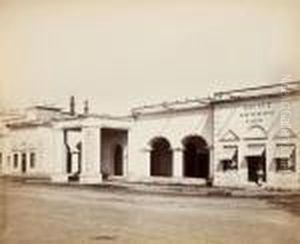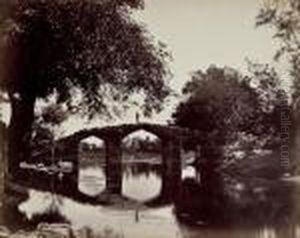John Edward Sache Paintings
John Edward Sache was a significant figure in the world of 19th-century photography, particularly known for his work in India. Born in 1840, Sache embarked on a career that would eventually establish him as one of the pioneering photographers in the Indian subcontinent. His journey into photography is emblematic of the era's fascination with documenting new lands and cultures, a pursuit that attracted many European photographers to Asia.
Sache's arrival in India coincided with a period of rapid transformation and British imperial expansion. He initially settled in Agra in the 1860s, a city famed for its monumental Mughal architecture, including the Taj Mahal. It is here that Sache began to meticulously document the architectural marvels, landscapes, and people of India. His work not only served as a record of India's rich cultural heritage but also catered to the European appetite for exotic imagery of the East.
Throughout his career, Sache moved across various parts of India, including Calcutta (now Kolkata) and eventually settled in Lahore. His photographs covered a wide range of subjects from portraits of Indian royalty and nobility to British officials and everyday scenes of Indian life. Moreover, Sache's architectural photographs are particularly noted for their technical excellence and artistic composition, offering invaluable insights into the historical and cultural contexts of the time.
John Edward Sache's contribution to the field of photography extends beyond his photographic legacy. He was instrumental in developing photographic techniques suitable for the Indian climate and played a crucial role in the early dissemination of photographic culture in India. His studios, at various points, became centers of learning and innovation.
Sache's life and work in India came to an end with his death in 1882. Despite his relatively short life, his extensive collection of photographs remains a vital historical resource. These images not only provide a visual documentation of India's past but also reflect the broader narratives of colonialism, cultural exchange, and the evolution of photographic practices. John Edward Sache's work continues to be celebrated for its historical significance and artistic merit, securing his place as a key figure in the annals of photography.

